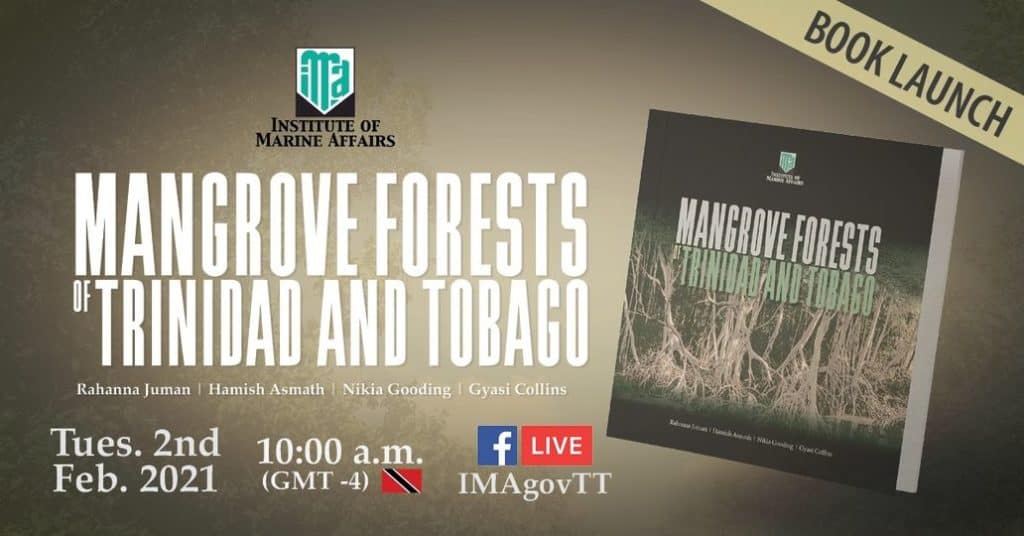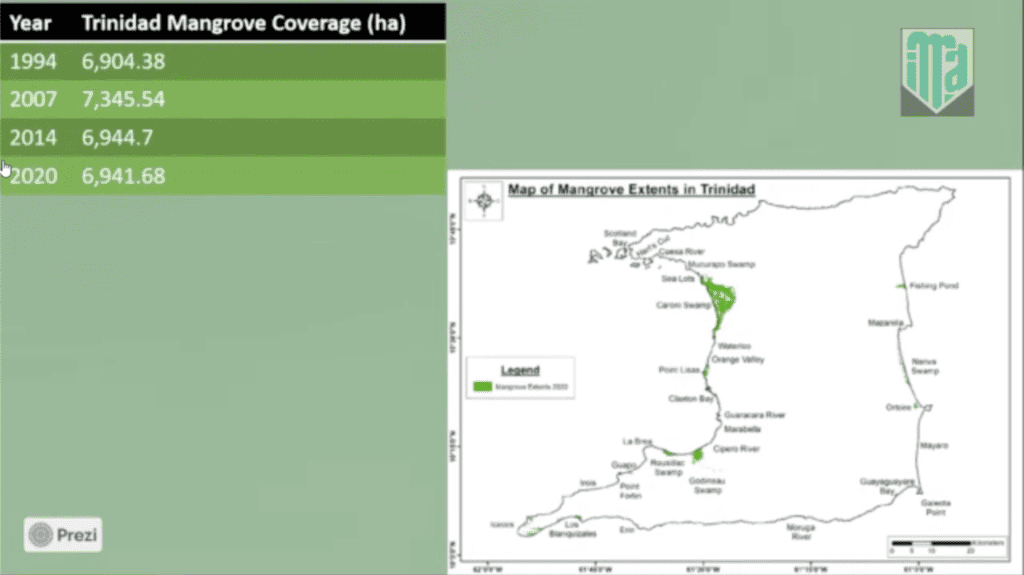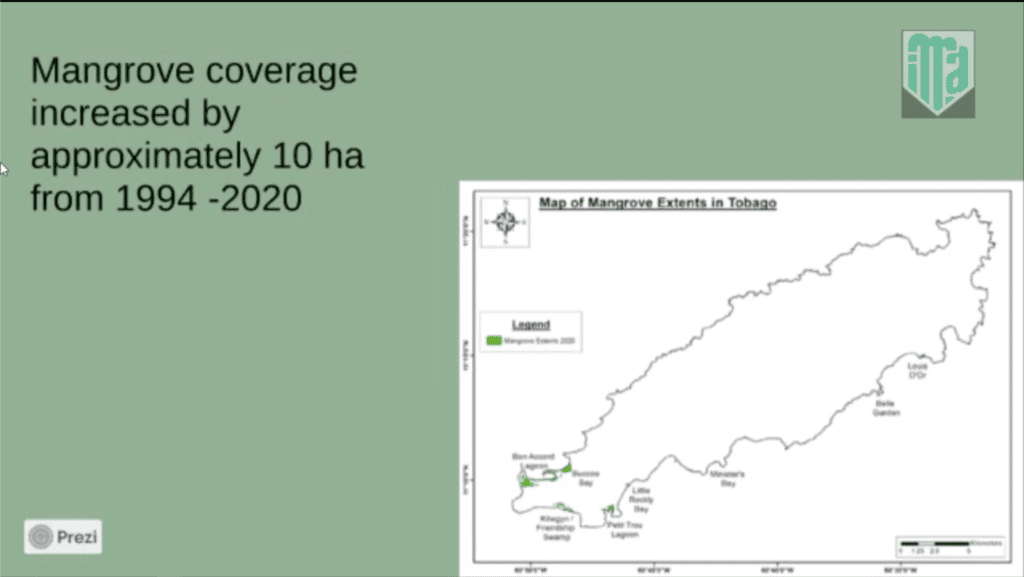The Institute of Marine Affairs (IMA) has launched a new easy-to-read book that profiles mangrove forests in Trinidad and Tobago and highlights their value in tackling the ill effects of climate change.
The book titled “Mangrove forests of Trinidad and Tobago” was introduced to the world, February 2, 2021, via a virtual launch event on World Wetlands Day where its co-author and acting director of the IMA, Dr Rahanna Juman, explained how the reputation of this adaptable wetland shrub has evolved over time.
“Mangrove forests were once viewed as smelly mosquito laden wastelands that served better purposes by being converted to other uses – but as scientific research advances, we are learning more and more how important these eco-systems are to our very existence here on earth,” she said.

Juman credited the reputational shift of mangrove forests to their ability to offset carbon emissions by capturing four to five times more carbon in their wood and soil than regular forests through a process known as carbon sequestration.
This gives mangrove forests the potential to act as a bulwark against climate change, thus upping the ante for all countries to actively protect them. Juman expressed hope that the IMA’s new book would help with conservation efforts for mangrove forests which she described as being “among the most threatened ecosystems in the world.”
“It is hoped that once citizens understand the important role mangroves play for our economy, safety and sustainability, that they would become meaningfully engaged in their conservation,” Juman said.
More than one in six mangrove species worldwide are in danger of extinction due to coastal development and other factors, leading to 11 of the 70 species found worldwide being placed on the the IUCN Red List of Threatened Species.
The connection between wetlands and fresh water supply
With the theme for World Wetlands Day 2021 being “wetlands and water,” presenters at the launch also focused on the relationship between mangroves and fresh water. Hayden Alexander, Chairman of the Board of Governors of the IMA, explained that mangrove forests help filter out pollutants from water sources that seep into aquifers and that they trap excess sediments before they reach the ocean.
“Mangroves are among the more powerful nature based solutions to fresh water,” Alexander said. Yet still, the benefits don’t end there – Alexander explained how mangrove forests protect against coastal erosion and boost community resilience.
“They provide shoreline protection against storms, wave energy and tsunamis, reduce flooding and coastal erosion and contribute to the many community coastal livelihoods providing support to fish nurseries and other marine mammal life,” Alexander said.
Juman said the book’s creation was guided by the 14th sustainable development goal (SDG) which calls for global citizens to “Conserve and sustainably use the oceans, seas and marine resources for sustainable development”.
Discover the unique attributes and history of each mangrove forest in T&T
Juman delved into the book’s contents explaining that wetlands in Trinidad and Tobago are home to seven different species of mangrove, with there coincidentally being a red species, white species and black species to match the country’s national colours.
Local wetlands can be found on all four coasts of Trinidad and in Tobago. Juman explained that readers can expect to learn about what makes each wetland area notable and unique. The Nariva swamp is the largest wetland on the island while Caroni Swamp is home to the largest mangrove forest; The Tobago Bon Accord Lagoon is at risk of encroachment while mangrove forests in the Point Lisas area are making a comeback. Juman said the book shares history on past plans made to develop wetlands for agriculture or industry and also shares details about ongoing initiatives for rehabilitation and restoration of mangrove forests – now that policymakers are starting to better understand their value.
“We show where these wetlands have changed, what lives there, who uses it and what are the management interventions,” Juman explained.
The Minister of Agriculture Land & Fisheries, Clarence Rambharat, addressed attendees at the launch where he touched on the impact of the coronavirus pandemic and said that conservation efforts become even more important as a country faces challenging times.
“The reality is that the more difficult the economic circumstances are, the more important it is to manage and take care of our natural resources because it is to our natural resources that we end up turning – and more importantly, even in these challenging times, we have to ensure that we have the quality of the physical environment to keep our people healthy, happy and performing at their optimum.”
The book “Mangrove Forests of Trinidad and Tobago” is written in simple non-technical language so that decision-makers, land use planners, students and people from all walks of life would be able to access and enjoy the information. Point Lisas Nitrogen Limited (PLNL) funded the creation of copies of the book, some of which will be distributed to national schools and libraries. Dr Juman was joined by co-authors Gyasi Collins, Nikia Gooding and Hamish Asmach in writing and publishing the book.







